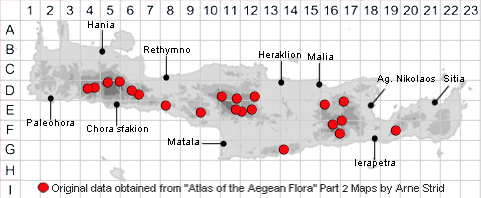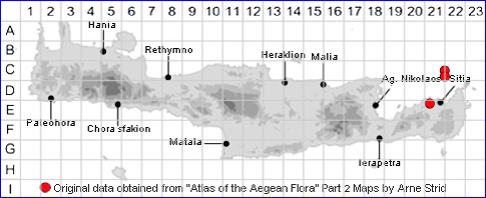

ARENARIA SERPYLLIFOLIA
Including Arenaria serpyllifolia subsp. aegaea
Family and Genus:- See- CARYOPHYLLACEAE/Subgen. ARENARIA
Common Names:- Thyme-leaved sandwort
Homotypic Synonyms:- Alsinanthus serpyllifolius, Stellaria serpyllifolia.
Meaning:- Arenaria (L) Sand-dweller.
Serpyllifolia (L) Thyme-leaved.
General description:- Relatively robust, surface minutely hairy and rough (scabrid-
puberulent) annual, sometimes biennial or perennial.
Stems:-
1) 5-20 cm, usually profusely branched at the base, ascending or erect, retrorsely
eglandular puberulent, below and patently, glandular-pubescent above.
Leaves:-
1) 2·5-8 mm, broadly ovate to ovate-lanceolate, acute or acuminate, 3- to 5-veined.
a) lower, petiolate.
b) upper, sessile.
Flowers:-
1) Diffuse or dense, with dichasia.
a) pedicels, usually longer than the sepals.
2) Sepals, ovate-lanceolate or ovate, acute, 3- to 5-veined.
a) inner, with a scarious margin.
b) central, green part usually being 1/3-1/2 the width of the sepals.
3) Petals, not more than 2/3 as long as sepals, white.
Fruit:-
1) Capsule, less than twice as long as wide, ovoid-conical or subovoid-cylindrical.
2) Seeds, 0·3-0·7 mm, tuberculate, blackish.
Key features:-
1) Petals, distinctly shorter than the sepals, not more than 2/3 as long.
2) Leaves, ovate to ovate-lanceolate, 3- to 5-veined; scabrid puberulent.
3) Sepals, with 3-5 veins.
4) Seeds, 0·3-0·7 mm.
Habitat:- In a variety of dry, open habitats. 0-2200 m.
Distribution:- Throughout Peloponnisos, mainland Greece, (but rare in the far NE)
and Ionian Islands. - Widespread in the N-temperate regions introduced elsewhere.
On Crete mainly confined to the four main massifs.
Flowering time:- Mostly Apr-June
Photos by:- By kind permission of Saxifraga - Free Nature Images & Wiki-
Commons
SPECIES DESCRIPTION
ARENARIA SERPYLLIFOLIA subsp. AEGAEA
Homotypic Synonyms:- Arenaria aegaea
Meaning:- Aegaea (L) From the Aegean region.
Resembling Arenaria serpyllifolia, but differering in the following characters
1) Plant, 2-6 cm, compact, densely branched, glandular-puberulent, often densely,
especially above.
2) Leaves, broadly elliptical or ovate to suborbicular, subacute to obtuse, somewhat
fleshy.
3) Sepals, 3·5-4 mm, the inner with broad, scarious margin.
4) Capsule, subovoid-cylindrical, not swollen at base, shorter than or equalling
sepals.
5) Seeds, 0·4-0·5 mm.
Habitat:- Rocky coastal habitats, dry open shrubby vegetation. 0-30(200) m.
occasionally on roadsides and other open habitats near the sea, mainly on
limestone.
Distribution:- Endemic to the Aegean area. very rare on Crete currently only known
from the extreme north east coast.
Flowering time:- Mostly Apr-June
Photos:- None currently available

~~~~~~~~~~~~~~~~~~~~~~~~~~~~~~~~~~~~~~~~~~~~~~~~~~~~